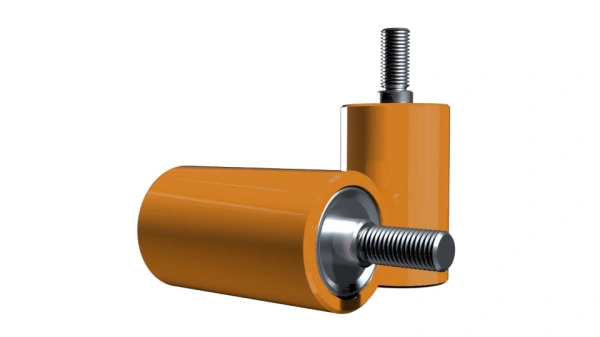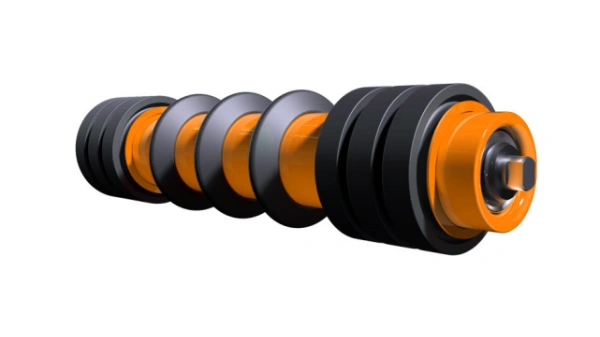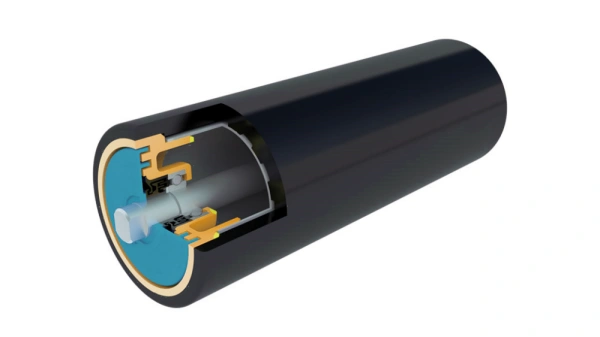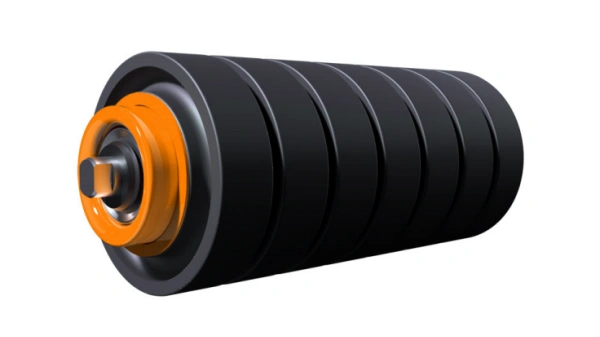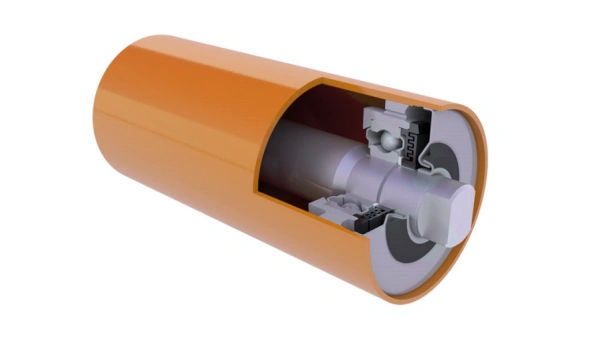Just let we know what you want, and we will get in touch with you as soon as possible!
Mobile Bulk Material Handling Experts
Aggregate Conveyor Rollers for Conveyor System
Aggregate conveyor rollers are vital components in material handling systems, particularly in industries like mining, construction, and quarrying. These rollers support and guide conveyor belts as they transport bulk materials such as gravel, sand, and crushed stone. Ensuring the right selection, installation, and maintenance of conveyor rollers is crucial for optimizing efficiency, reducing downtime, and minimizing wear and tear on the conveyor system.

aggregate conveyor rollers
What are Aggregate Conveyor Rollers?
Conveyor rollers are cylindrical components of conveyor idlers that:
- Support the Belt: Prevent sagging and ensure smooth movement of the conveyor belt.
- Guide the Belt: Maintain proper alignment and tracking of the belt.
- Minimize Friction: Facilitate efficient material transport with minimal resistance.
In aggregate handling plant, these rollers are designed to withstand heavy loads, abrasive materials, and harsh environmental conditions. These rollers are widely used on:
- portable grasshopper conveyors for aggregate transferring,
- portable radial telescopic stacker for aggregate stockpiling,
- tracked mobile conveyors for mobile crushers plant.
- In-plant and overland belt conveyor for aggregate handling.

aggregate conveyors
Types of Aggregate Conveyor Rollers
1. Carrying Rollers
- Function: Support the aggregate conveyor belt and the load being transported.
- Applications: Used in the loaded section of the conveyor belt.
2. Return Rollers
- Function: Support the return belt on its return path when it’s not carrying material.
- Applications: Ensures smooth and sag-free return of the belt.
3. Impact Rollers
- Function: Absorb impact and reduce shock at loading points where materials are dropped onto the belt.
- Applications: Ideal for aggregate systems handling large or heavy materials.
4. Guide Rollers
- Function: Keep the aggregate conveyor belt aligned and prevent lateral movement.
- Applications: Critical for preventing belt misalignment in long or high-speed conveyors.
5. Training Rollers
- Function: Automatically adjust to correct belt alignment issues.
- Applications: Used in aggregate conveyor systems prone to tracking issues.
6. Tapered Rollers
- Function: Facilitate directional changes and transitions in the conveyor system.
- Applications: Common in systems with curved or spiral layouts.

aggregate radial stacker conveyor
Materials Used in Aggregate Conveyor Rollers
1. Steel
- Advantages: The steel conveyor roller is suitable for heavy-duty and abrasive applications.
- Applications: Mining, quarrying, and construction.
2. High-Density Polyethylene (HDPE)
- Advantages: The HDPE roller has features of lightweight & corrosion-resistant. It can reduce noise and energy consumption of aggregate conveyors.
- Applications: Wet or corrosive environments like sand or gravel processing.
3. Rubber-Coated Rollers
- Advantages: The rubber coated roller can enhance can reduce belt wear and absorbs impact and noise.
- Applications: Loading zones and areas prone to belt slippage.
4. Composite Materials
- Advantages: High wear resistance and lightweight. Energy-efficient and long-lasting.
- Applications: Specialized aggregate handling systems with high-performance requirements.
Key Features of High-Quality Aggregate Conveyor Rollers
- Durability: Built to withstand abrasive materials like crushed stone and gravel.
- Corrosion Resistance: Essential for operations in wet or humid conditions.
- Low Friction: Reduces energy consumption and belt wear.
- Sealing Mechanisms: Prevents dust, water, and debris from contaminating the bearings.
- Load Capacity: Designed to handle the weight of heavy aggregates without deformation.
Benefits of Using Aggregate Conveyor Rollers
- Improved Efficiency: Smooth operation reduces friction and energy costs.
- Enhanced Aggregate Conveyor Belt Longevity: Proper roller support minimizes wear and tear on the belt.
- Reduced Downtime: Durable rollers lower the frequency of maintenance and replacements.
- Increased Safety: Ensures stable belt tracking, reducing the risk of spills or belt damage.
Choosing the Right Conveyor Rollers for Aggregate Systems
- Load Capacity: Select rollers capable of handling the weight of crushed rocks and aggrgate.
- Material Compatibility: Use corrosion-resistant materials for wet or chemically aggressive environments in aggregate processing plant.
- Environmental Conditions: Consider factors like temperature, humidity, and dust levels.
- Belt Speed and Length: Choose aggregate conveyor rollers designed for the specific speed and length of your aggregate conveyor system.
- Maintenance Requirements: Opt for rollers with sealed bearings and low-maintenance designs.
Aggregate conveyor rollers are essential for efficient material handling in industries dealing with heavy and abrasive materials. By selecting the right type, material, and design, businesses can enhance productivity, reduce downtime, and ensure long-term reliability. Regular maintenance and timely replacement of worn components are equally crucial to optimizing conveyor system performance. Whether you're operating in mining, quarrying, or construction, investing in high-quality rollers ensures smooth and efficient aggregate transport.

 English
English
